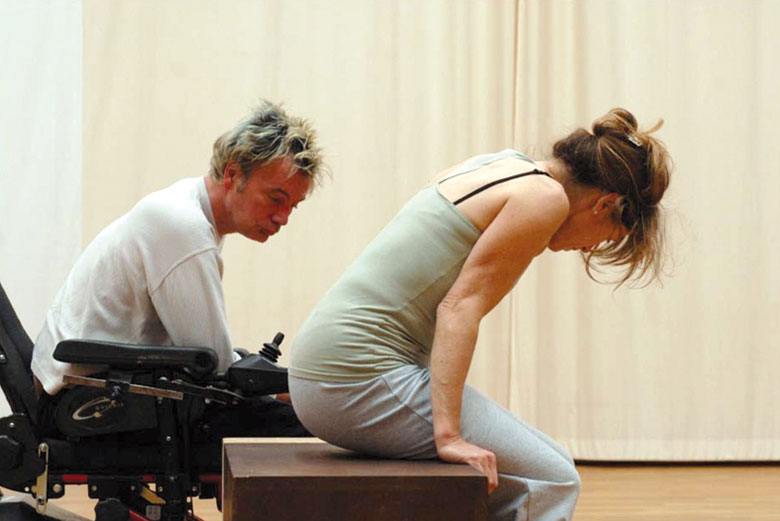
Path of the unknown, discovery and change
Movement creates, generates new perceptions, for the artist as well as the patient. From the moment of a movement’s conception, a path toward discovery and transformation is launched. Within the process of creation, the choreographer and dancer, or dance therapist and patient, share a similar role, which is to learn while doing, to explore the unknown, to allow new perceptions to emerge.
The dancer experiences a transformation during the creative process, a condition accessible to the “non-dancer” as well; both can be immersed in an experience often rhythmic and collective, and powerful. The essential elements of Dance, the distillation of its essence, is available to anyone, with or without dance training. This is where the raw material of dance therapy lies.
Choreographic creation
I at times have occasion to create dances in a therapeutic situation. While I may adapt the creative process to the context, the artistic journey remains intact. How does one proceed so that these young autistic adolescents may express themselves through dance, in their own way, and find pleasure in it? How does one bring these psychotic adults to realize that they can produce true dance movement, and beautiful movement, and that they can have grace when they dance? How to transform lead into feathers, as Vincent Fritschi would say? In these situations, I try to bring people toward a high level of artistic experience, rather than reduce the artistic demands on the pretext that the participants are not trained artists.
Workshops
Since 1998, I have used dance to work with people in diverse situations and in uncommon contexts, places where dance is less likely to go. It is a matter of choice, after years spent in the world of contemporary dance. Among these places and people there are: women inmates (Loos-les-Lille et Montluc, Lyon), blind or sight-impaired adults, physically handicapped children, autistic adolescents and adults in psychiatric institutions. These experiences led to two recent performances:
Calder’s Circus, a piece for psychotic adults (2011), and
De Bonneuil à la Nouvelle-Orléans, piece for ten autistic adolescents, presented at the Maison des Arts in Créteil and the Centre national de la danse (Paris) in June 2009.
The challenge for me is to seek within the raw material of dance, and my past experiences as a dancer, to find elements that may respond to the interests, needs, imagination, bodies and histories of the people I’m working with. Whether or not they have any experience in dance. What do I have that can help these people, physically, mentally, given their stories and their lives?
« Creativity is one of the principal means by which human beings free themselves from the chains not only of their conditioned responses, but also of their customary choices. »
Silvano Arieti, Creativity : the Magic Synthesis